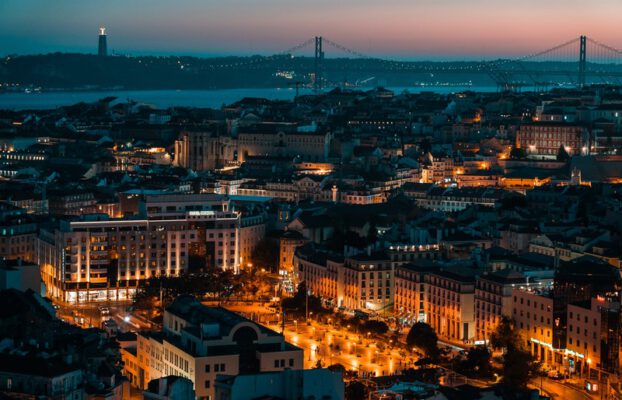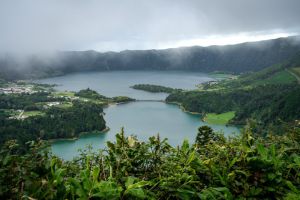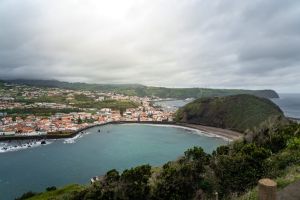Located on the Atlantic coast, Lisbon is my favorite city in Portugal and one of the most beautiful cities in Europe. In this article, you will find lots of Lisbon attractions and tips – I will show you the city’s tourist highlights, but also insider tips that I have received from locals. This will make your city trip something special.
Lisbon is very diverse and offers plenty to see in a relatively small area. Built on seven hills, the city boasts breathtaking architecture and electrifying culture. But the mood of the people in the accommodations and restaurants, or partying in Bairro Alto at night, is also unique.
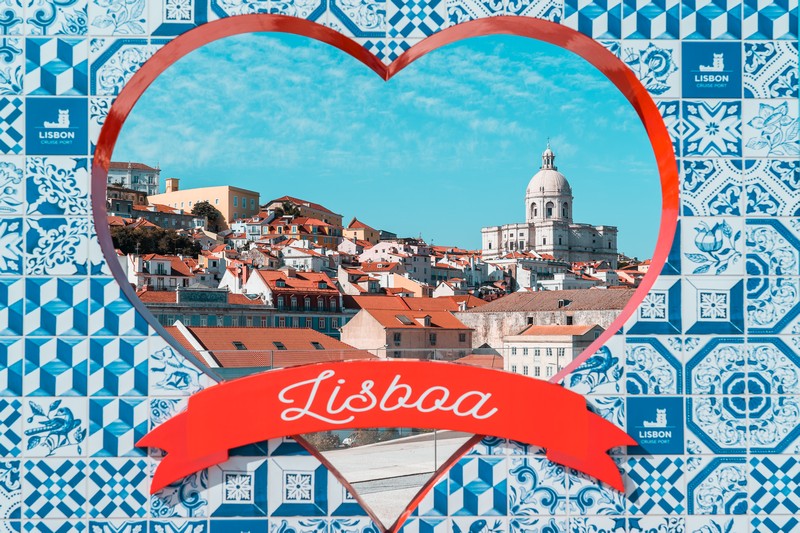
I myself have been here many times over the years and have discovered something new every time. But I also love to revisit the well-known Lisbon attractions.
If you have never been to Lisbon, get a first impression of Lisbon’s charm in this short video:
All of the following Lisbon attractions can also be found on the map:
Lisbon’s most important districts
The various districts in Lisbon are very different in their architecture and structure. Each part seems like a small town of its own. That’s why Lisbon is for me the city of many faces.
- The center is formed by the “lower city” Baixa with its many shops, stores and squares.
- To the east of it lies the old town (Alfama) with numerous miradouros and the Castelo at its center. Alfama, with its narrow, winding streets and steep ascents, is one of the city’s most original districts, having survived the great earthquake of 1755 well. The paths criss-cross to form a veritable labyrinth in which you can quickly get lost. But that’s what makes Alfama so special.
- In contrast, the district of Chiado, located on a hill to the west of the Baixa, appears much more modern and elegant. It was almost completely destroyed in the earthquake and had to be completely rebuilt. The streets here were laid out symmetrically.
- North of Chiado, on another hill, lies the “upper town” Bairro Alto. This is where the nightlife is. Numerous bars, restaurants, clubs, pubs and cafés line the streets. If you want to party in Lisbon, you have to go to Bairro Alto.
- About 6 kilometers west of the Baixa is Belém, also a very well-known district that you should not miss out on when visiting Lisbon due to the numerous landmarks.

Tip: With the Viva viagem Card, you can use public transportation throughout Lisbon. You can buy the card at various ticket booths and top it up at vending machines around the city.
Cool places to stay in Lisbon
Part of every good city trip is also good accommodation. Fortunately, there are more than enough of these in Lisbon. Most hotels also include breakfast in the price.
I can recommend the somewhat different Maxime Hotel Lisbon. It used to be a cabaret. The rooms and the hotel bar are still decorated in a style reminiscent of that time. Even today, there are still shows here at weekends, which many locals reserve tables for. You can basically eat your fill for the whole day at the great breakfast buffet. What’s more, the hotel is quite centrally located next to a cute little park.
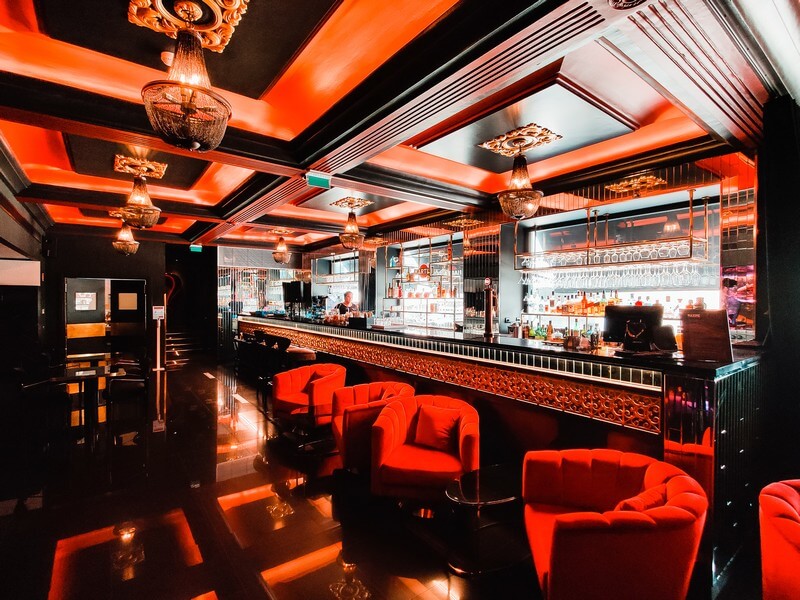
If you don’t fancy hotels with included breakfast, then an airbnb is definitely a good option. There are many beautiful airbnb apartments in the Mouraria district. From here, you can quickly reach the most popular miradouros in the city and enjoy the sunset in a relaxed way.
1. Lisbon’s Miradouros – Discover the city from above
Miradouro is the Portuguese word for “great view”. There are many such vantage points in Lisbon, because the city is situated on a total of seven larger hills. You can recognize these romantic spots by the rows of public binoculars. There are often small cafés and gardens nearby.
You can see many of the miradouros from a walk. They are particularly beautiful at sunset. However, many other onlookers often come then too, so you should get there in good time.
Here is a small selection of miradouros in Lisbon:
Miradouro de Santa Luzia
From this vine-covered platform, you have a great view of the Tagus and Lisbon’s waterfront. In summer, there are quite a few painters here, which is of course a clear sign of the picturesque view at this place.
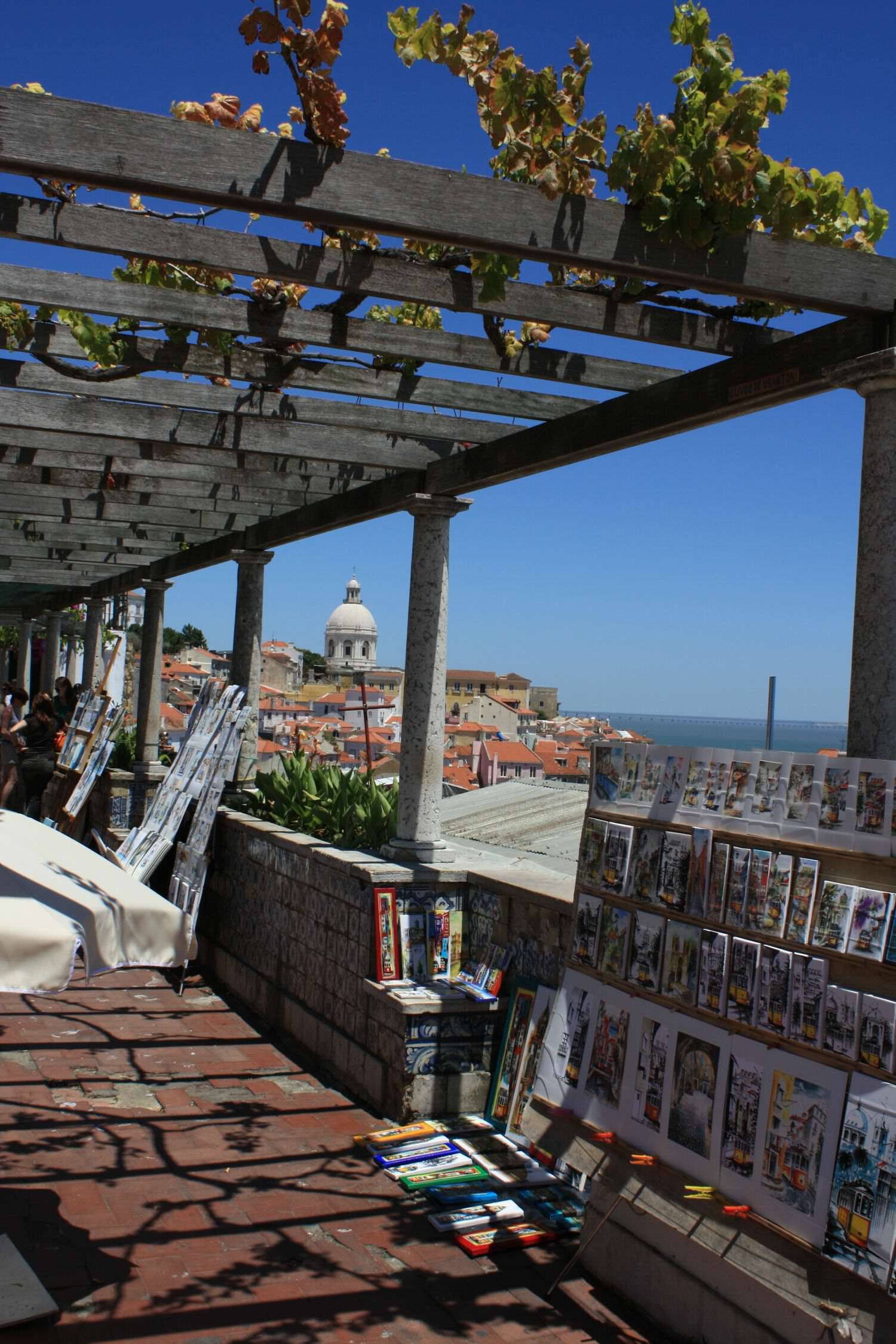
Miradouro da Graça
A little north of the Castelo is this view of the old town. In the background you can see the famous bridge “Ponte”. There is also a small kiosk here.
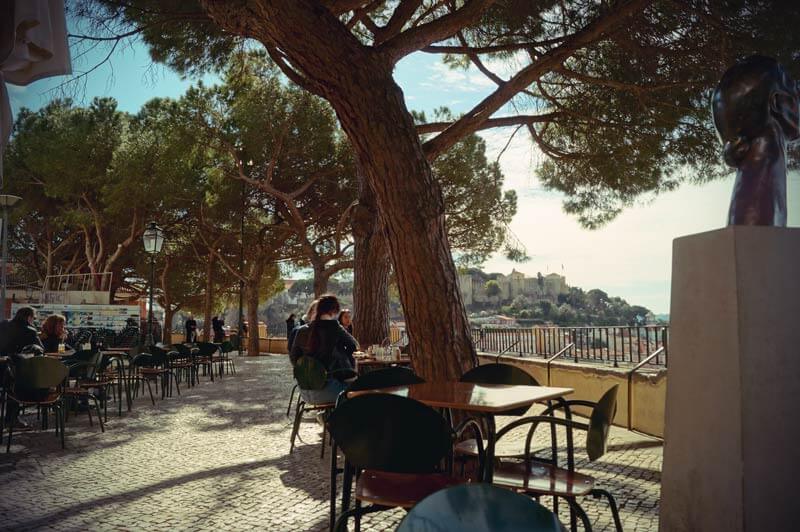
Miradouro de Nossa Senhora do Monte
This is one of the highest vantage points in Lisbon, from which you can see almost the entire city. In my opinion, this is the best place to watch the sunset. And even when it’s already dark, this is perhaps the best place to see the illuminated city of Lisbon.
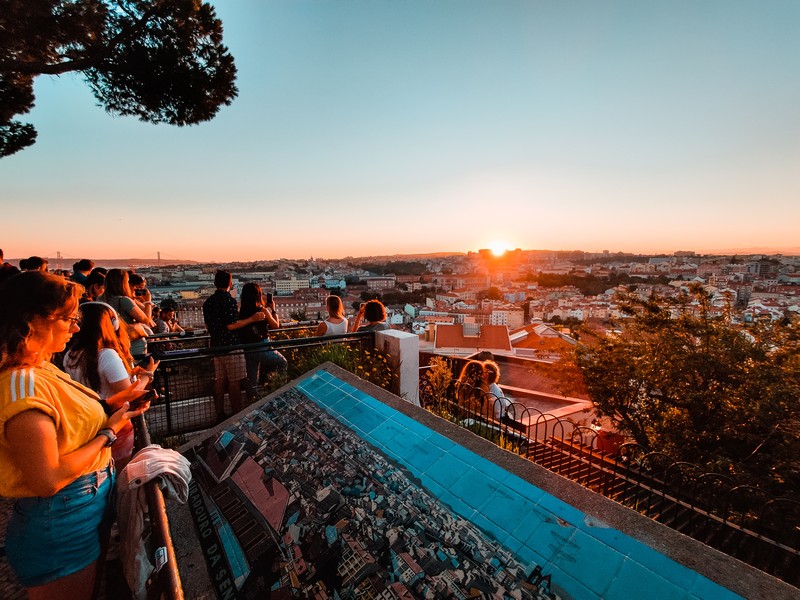
There is no kiosk here, but various food trucks and street musicians usually come here in the evenings.
Miradouro de São Pedro de Alcântara
This is one of the largest and most famous viewpoints in Lisbon. There are often street musicians playing here. At the back, there is a terrace with a kiosk.
Miradouro do Jardim do Torel
One of the most beautiful but lesser-known viewpoints is in Jardim do Torel. In addition to the small park, there is also a swimming pool that attracts many locals in the summer.
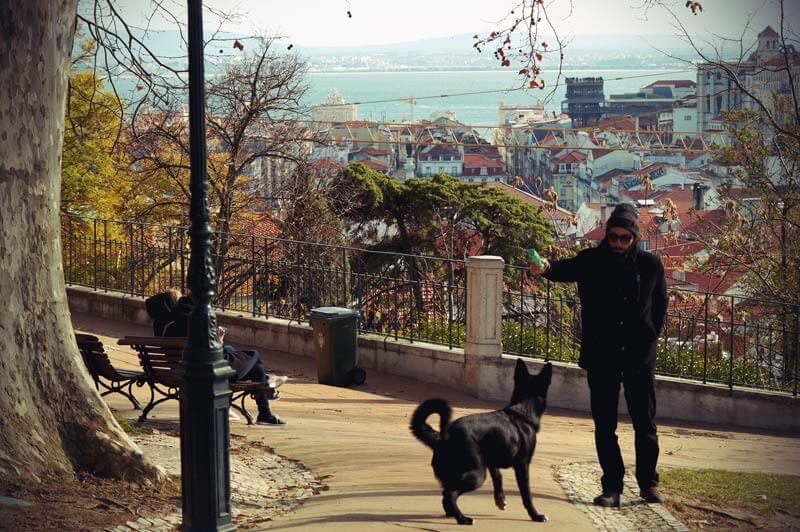
Miradouro do Monte Agudo
This lookout point is rather less well known. You can look towards the city center and watch planes approaching the city.
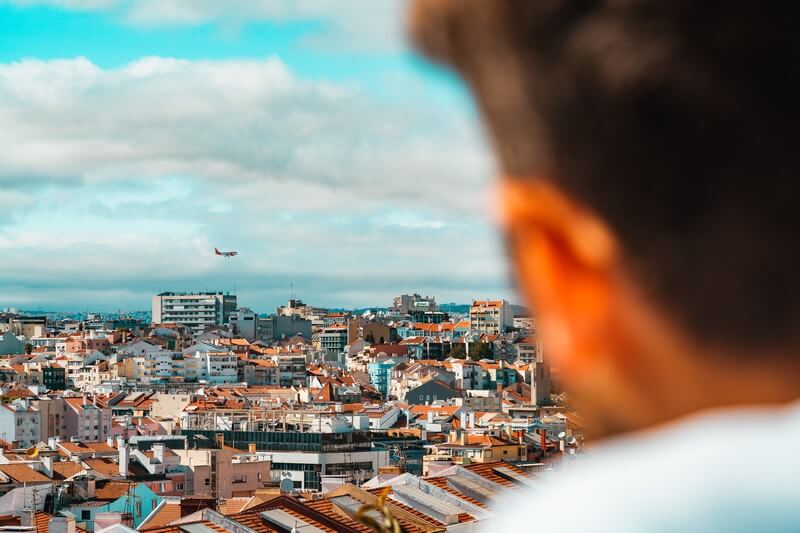
Miradouro Parque Eduardo VII
You have a great view over the city to the Tagus River from the Miradouro Parque Eduardo VII.
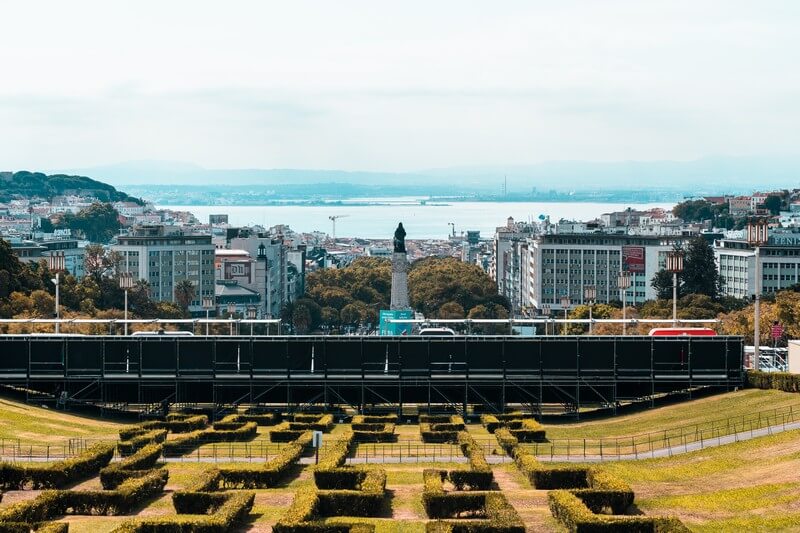
A list of other miradouros can be found on the website of golisbon.com.
2. Tram 28 – Discover Lisbon’s sights by rail
If your feet can’t carry you any further, you should simply board the 28 tram, which travels through many districts and passes some of the city’s attractions. The trip from Martim Moniz to Campo Ourique takes about 40 minutes.
The traditional yellow trams sometimes have to fight their way through narrow streets and climb steep hills. Every now and then, one or other of the Lisboners is left hanging outside. These trams are so typical of the Lisbon cityscape that they are considered a sight in themselves.
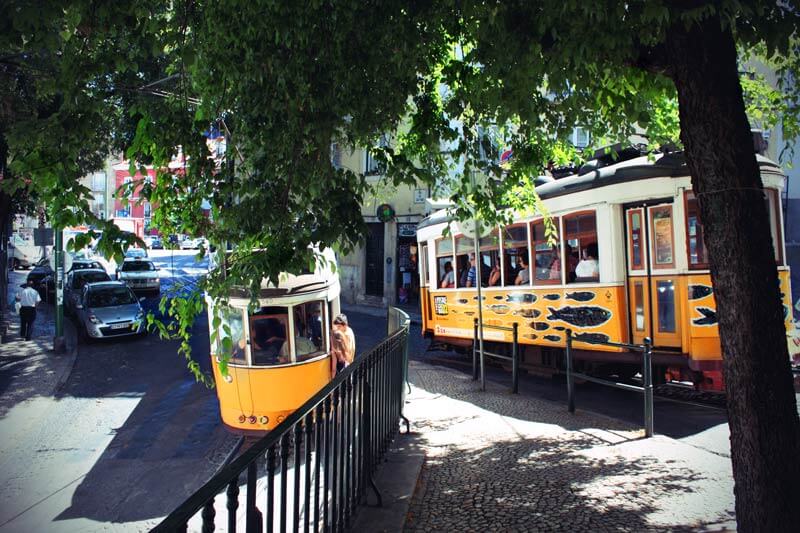
3. Mosteiro dos Jerónimos – See how the monks once lived
This imposing monastery is located in the district of Belém. The building was commissioned by Manuel I and is considered the most important building in the Manueline style, which only appeared in Portugal in the early 16th century. This style is characterized by its oriental influences and the lavish use of gold and precious stones. At that time, Portugal was very rich due to the discovery of the sea route to India and trade.
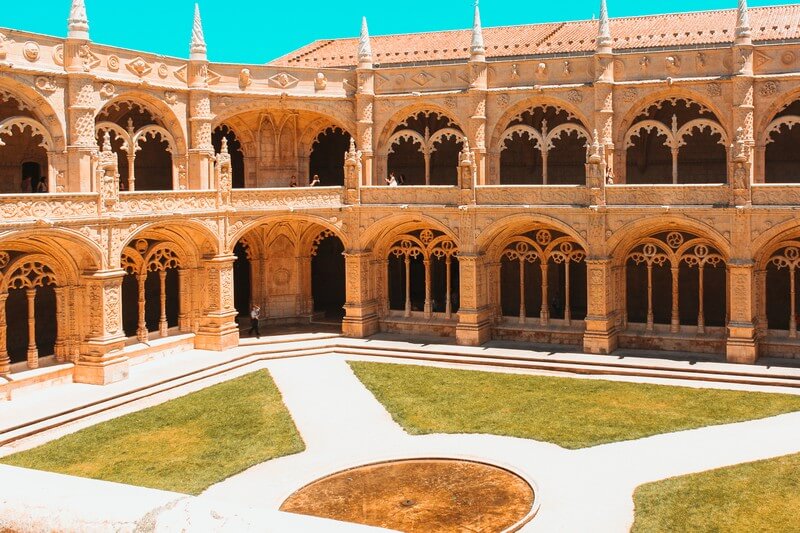
I found the building’s pentagon-shaped courtyard, with its many magnificently decorated arched walls, windows and pointed towers, particularly impressive. Inside are the sarcophagi of Vasco da Gama, Luís de Camões (the Portuguese national poet) and a number of Portuguese kings. There are also a large number of beautifully decorated and well-preserved azulejos. The building survived the great earthquake of 1733 without major damage and was added to the UNESCO World Heritage list in 1983.
4. Torre de Belém – Explore the World Heritage Site
Just around the corner from the Mosteiro dos Jerónimos on the Tagus River, you will find this very famous attraction, which also graces numerous postcards. The Torre de Belém was once used as a watchtower, is also in the Manueline style and, like the Jerónimos Monastery, was declared a UNESCO World Heritage Site in 1983.
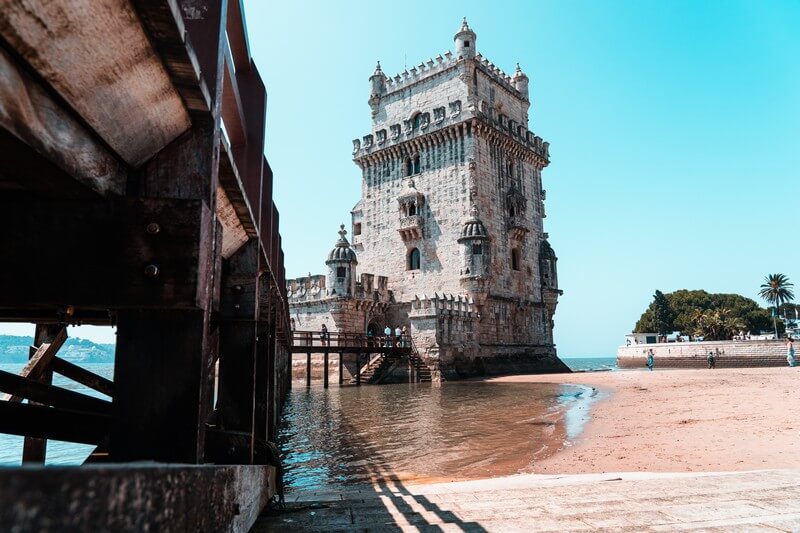
5. Padrão dos Descobrimentos – Portugal’s greatest personalities set in stone
A few meters from the Torre de Belém is the Padrão dos Descobrimentos monument. It was only erected in 1960 to commemorate Portugal’s age of discovery. At the top stands Henry the Navigator (1394 to 1460). Behind him, another 32 Portuguese explorers of that time are carved in stone.

6. Cristo Rei Statue – On the other side of the river
The Cristo Rei statue on the southern bank of the Tejo at the end of the Ponte de 25 Abril bridge is one of the most important places of pilgrimage in all of Portugal. Its 80-meter-high platform offers one of the best vantage points for viewing Lisbon.

However, it is not that easy to get there. You can reach the statue by ferry from Cais do Sodré to Cacilhas (about 10 minutes) and from there by bus 101, which runs every half hour, to the final stop. Cost: about €5 each way.
7. Praça do Comércio – People watching
The “Commerce Square” is located in the very south of Baixa on the banks of the Tagus. Originally, this square was called “Terreiro do Paço” (“Palace Grounds”), because the palace stood here before the earthquake. But it was completely destroyed.
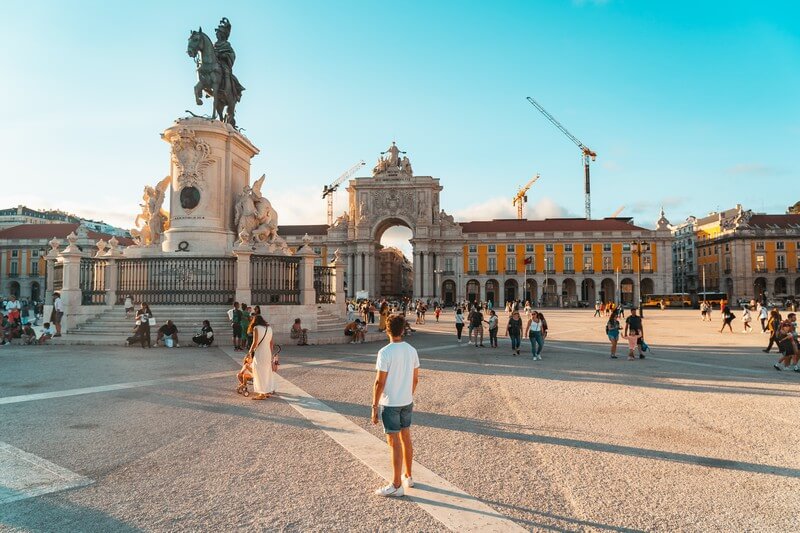
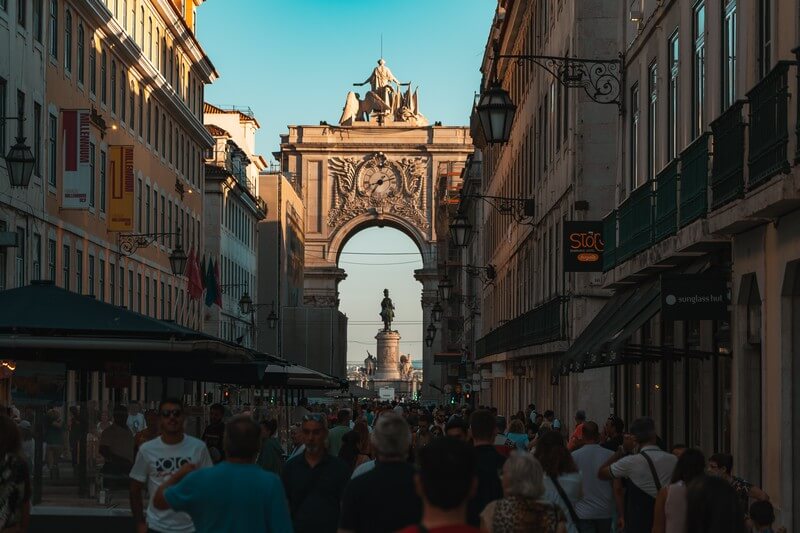
8. Elevador de Santa Justa – Take the coolest elevator in town
To get from the lower town (Baixa) to the upper town (Chiado and Bairro Alto), this striking iron elevator was built in the middle of the city center in 1902. The steel structure is 42 meters high and, to be honest, looks a bit out of place, but that’s probably why it’s a magnet for visitors.
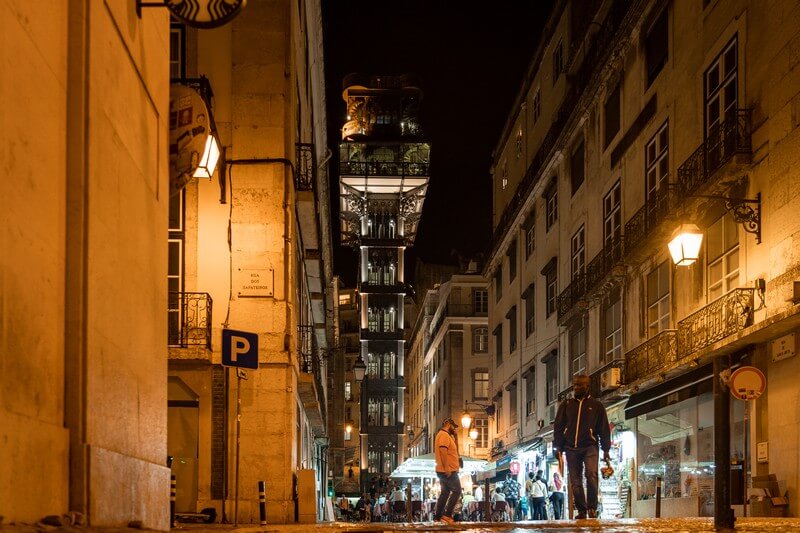
A ticket for the elevator costs around €5. However, you can also simply walk along the path behind the elevator to get to the platform.
9. Estufa Fria de Lisboa – the city’s most beautiful botanical garden
There are a few botanical gardens in Lisbon. But in my opinion, the Estufa Fria is the coolest and is one of Lisbon’s best-kept secrets.
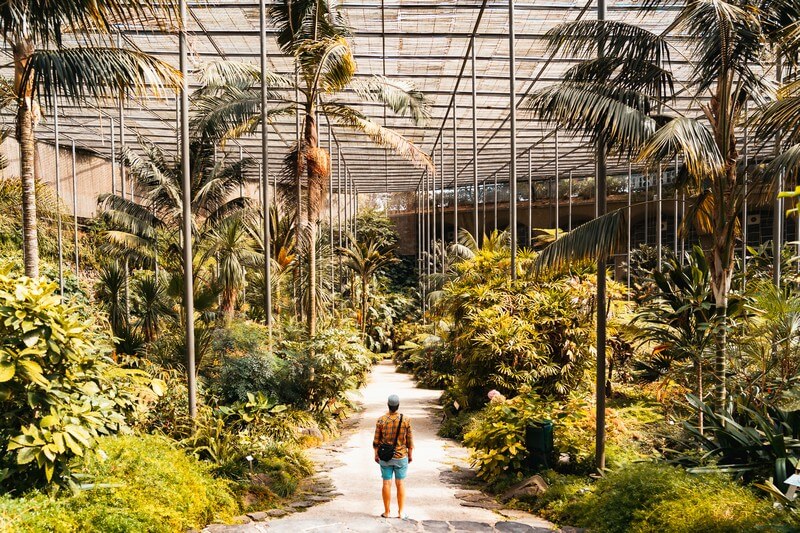
It is located in the Eduardo VII park and was built in an old quarry. Admission is only €3.10. For this you can visit three different greenhouses, where you will find more than 300 different plant species from all over the world.
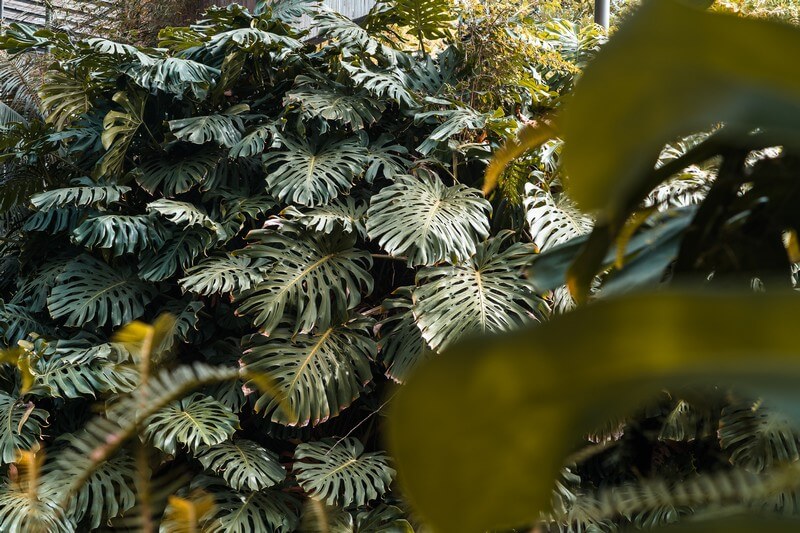
10. Jardim Botânico de Lisboa – Botany in the middle of the city
The official botanical garden of the city of Lisbon belongs to the National Museum of Natural History and Science and is a bit more expensive than the Estufa Fria. You can discover over 1,300 different plant species within the thick walls of the park. There is also a butterfly house here, but it is not always open.
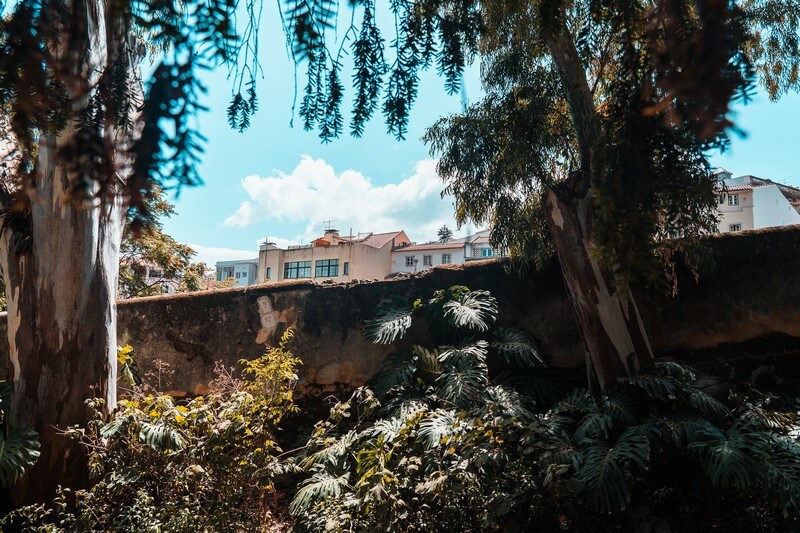
Tip: On Sundays between 10:00 and 13:00, admission to the park is free.
11. Castelo de São Jorge – Discover medieval Lisbon
The Castelo de São Jorge towers over the heart of the Alfama district. To get here, you first have to walk through old Lisbon. Once at the top, you have a great view of the city.
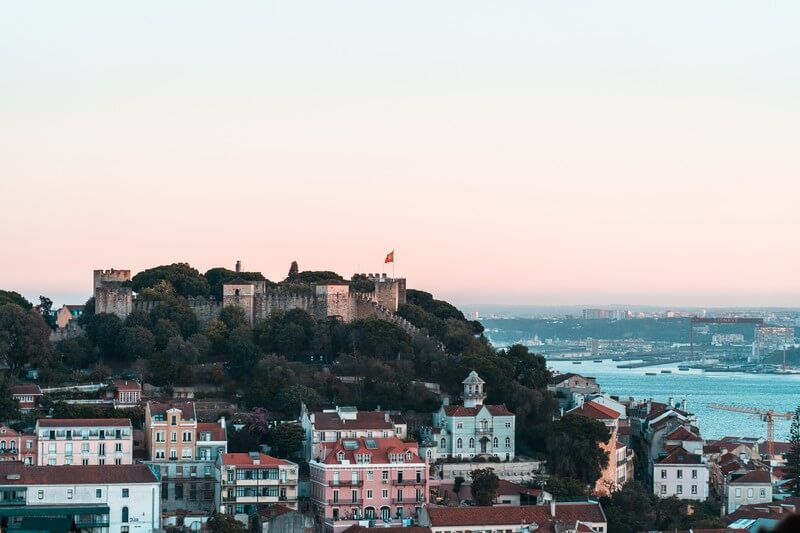
This fortress dates back to the 2nd century BC, but was inhabited for hundreds of years before that. Located on the highest hill in Lisbon, the site was converted into a castle by the Moors in the 11th century. Today, you can discover a museum within the castle walls and a 360° panoramic view of Lisbon in real time through a periscope.
12. Sé Patriarcal – Visit the most important sacred building in Lisbon.
This building is the main church and also the oldest church in the city of Lisbon. It was built in 1147. Before that, during the Moorish occupation, there was a mosque on this site.
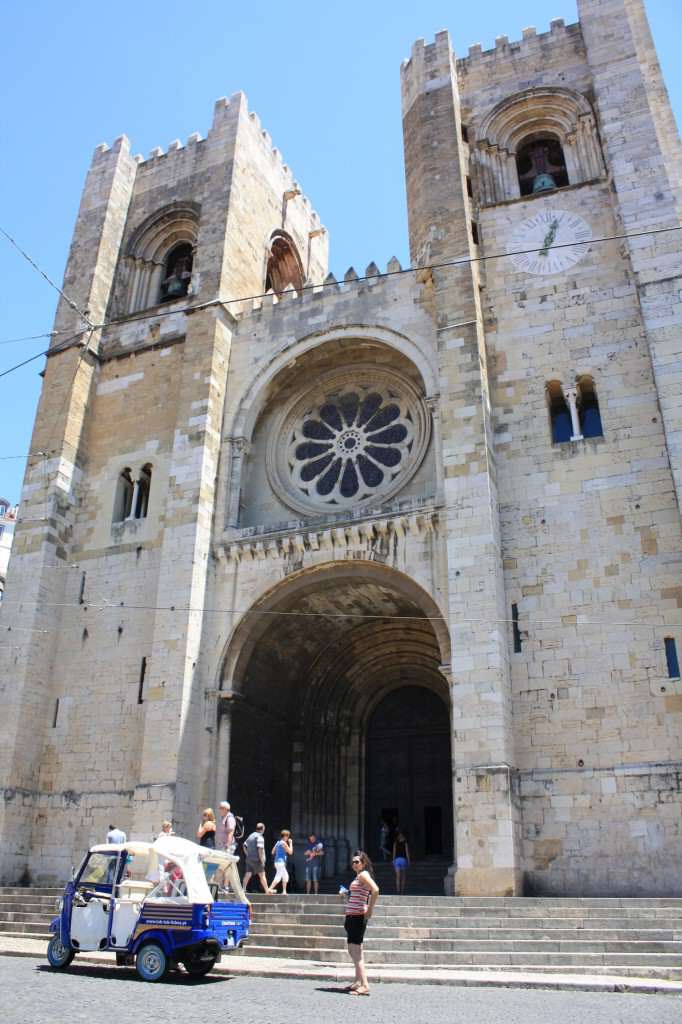
13. Sintra – Take a trip to the fairytale castle
“Rapunzel lets down her hair.” This fairy tale by the Brothers Grimm could well have originated in the enchanting Sintra. In addition to a castle perched high on a mountain with spectacular views of the Atlantic, there are also the ruins of an old Moorish castle, a palace garden and many other attractions.
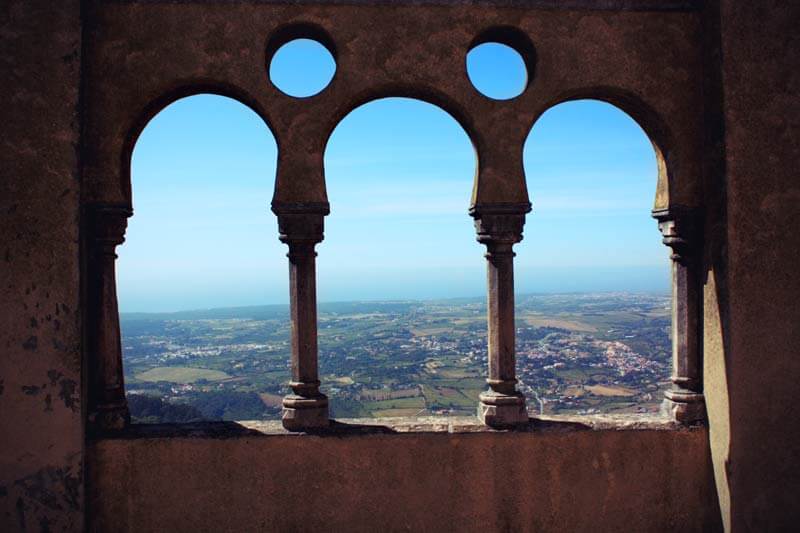
Sintra is about 30 kilometers from Lisbon and perfect for a day trip.
14. Lisbon’s beaches – chill out in the sand and soak up the sun
Lisbon is located on the coast and there are many great beaches in the region around Lisbon. There is something for everyone. The most famous is probably the Praia de Carcavelos, about 24 km from the city center. You can reach the beach by taking the train to Cascais (about 40 minutes from Cais do Sodré with the Linha de Cascais).
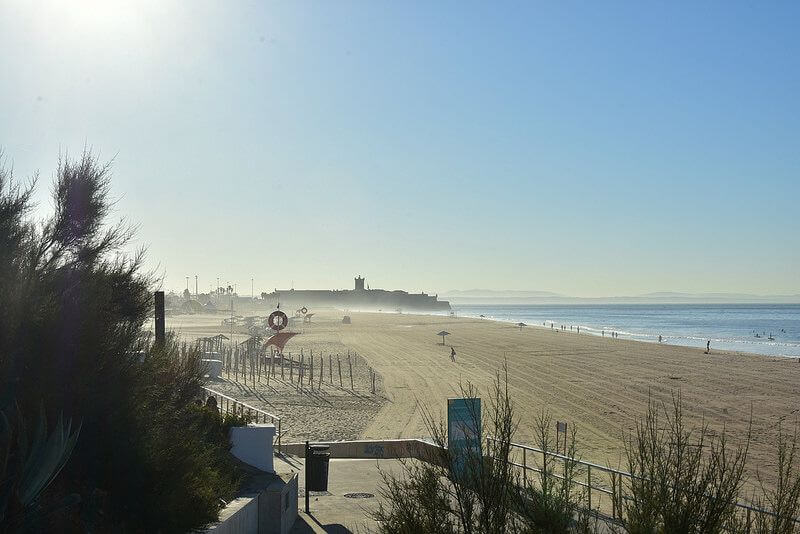
15. Azulejo Museum – The coolest tiles in town
Azulejos are the typical Portuguese tiles with their many colorful patterns. You can find them on buildings all over the city. There is even a whole museum dedicated to them – the Museu Nacional do Azulejo.
Here you can learn a lot about the azulejos and see numerous tile paintings. One of the most important exhibits is a map made of azulejos showing Lisbon 25 years before the 1755 earthquake.
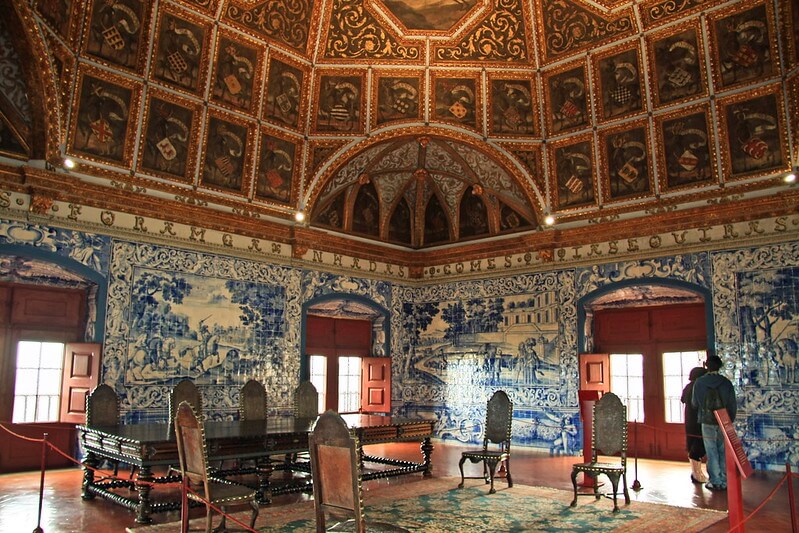
16. Bairro Alto – Party the night away with the locals
The nightlife in Lisbon mainly takes place in Bairro Alto and cannot be compared to that in other cities. Loud music can be heard everywhere in the clubs and bars. But almost no one is inside. Everyone stands outside talking, dancing and celebrating. Inside, you usually just get your drinks.
In terms of music, everything is played. There are also often live bands. Most of the time, a modern version of Fado, the typical Portuguese guitar music, is also played somewhere. In June, the Fado Festival takes place in Lisbon, where many fadistas perform in the area of the Castelo de São Jorge.
It is noticeable that nightlife in Portugal starts very late. The first people start gathering on the streets around 11:00 p.m. But it’s only from around 1:00 a.m. to 2:00 a.m. that things really get going. People usually party until the early hours of the morning, until it gets light again and the clouds are purple again.
17. Pink Street – Have a cocktail (or two ;) )
Lisbon’s Rua Nova do Carvalho is better known as Pink Street. It was once the center of the red-light district, where sailors, traders and prostitutes cavorted. Today, Pink Street is a hipster area with cool cocktail bars, cafés and restaurants with colorful sunshades stretching above them.
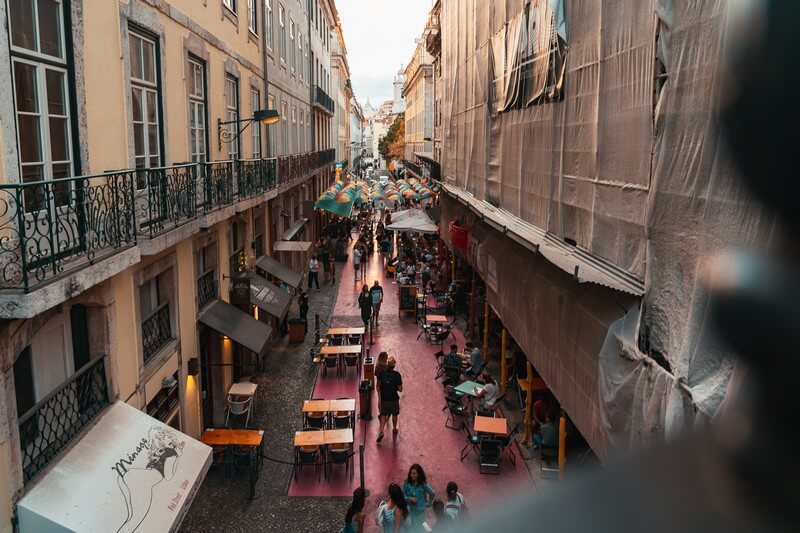
Even the shops’ decorations are sometimes the only reminder of the city’s infamous past. The cocktail bar Pensao Amor, with its special atmosphere, is definitely worth a visit.
18. Timeout Market – Eat in one of the city’s coolest markets
The large hall of the Timeout Market (Mercado da Ribeira) offers delicious food. Some of Lisbon’s best chefs prepare fish and seafood here, but there are also all kinds of other Portuguese delicacies.
You simply have to queue up at one of the stands and then take your food to the table in the middle of the hall. As a little tip, there are further restaurants and seats in the corridor behind the stands in the hall. Here you don’t have to queue up and you will probably get your food faster.

19. Mouraria – Discover creative street art
Mouraria is a slightly more alternative part of Alfama. Many consider it Lisbon’s most exciting neighborhood, as it is home to a number of artists and creatives. It’s easy to get lost in the many narrow streets in Mouraria. But that’s also how you discover the numerous pieces of grafiti on the walls.

A little tip: use the Ingress app to see all the cool spots on the map. You can find more information about this in this article: Goodbye guidebooks: 6 alternative ways to discover secret places.
Alternatively, there are also special street art tours where a guide will take you to the coolest corners of the city, including outside Mourarias. One provider is Lisbon Street Art Tours.
20. Nibble on the famous Pastéis de Belem
The district of Belém in Lisbon is home to the delicious Pastéis de Belem. These are a small tart made from egg dough. This sweet delicacy probably has its origins with the monks of the Jerónimos Monastery, who invented it there in the 18th century.
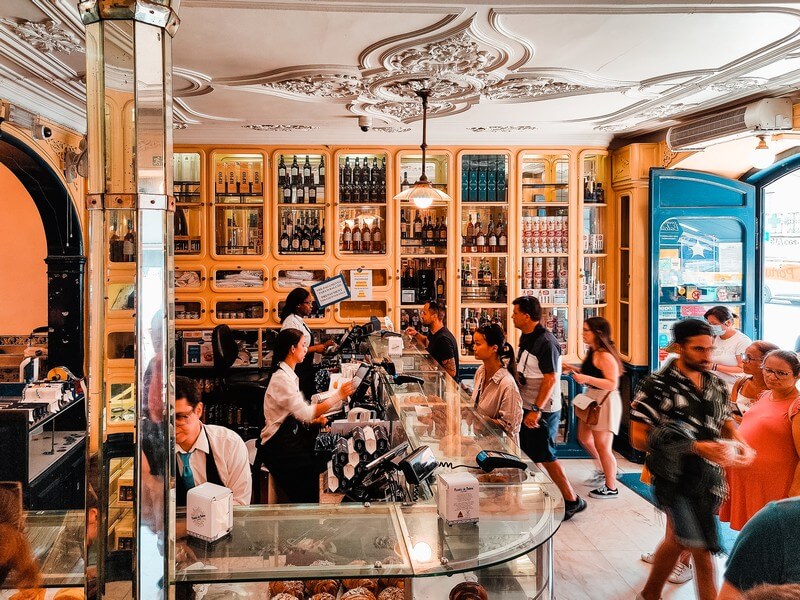
In the pastry shop Pastéis de Belem, with an adjoining café, you can watch how the Pastéis de Belem are made. Of course, you can also buy and eat some. Tip: There are two entrances, one to the café and one to the shop. The queue for the shop is usually not as long because customers here only pick up their tarts and eat them on the go. In the café, you often have to wait for a table to become available.
The recipe for the Pastéis de Belem is not really secret, though. You can easily make them at home.
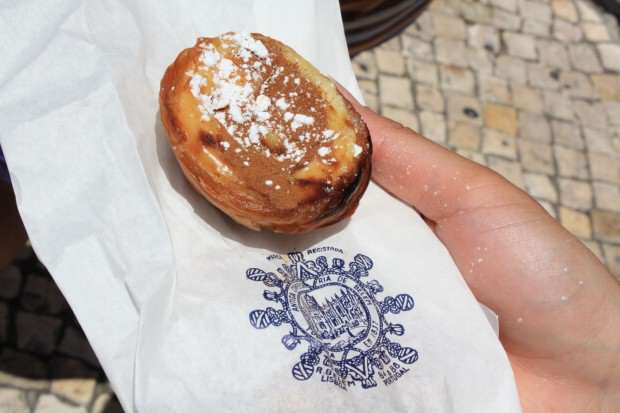
By the way, the alternative to the Pastéis de Belem is the Pastéis de Nata. You can find them all over the city. But that doesn’t make them any less delicious ;)
21. Take a cable car
Besides the Elevador de Santa Justa, there are three other cable cars that Lisbon’s inhabitants use to climb the steep hills:
- Gloria Funicular
- Bica Funicular
- Lavra Funicular
These were once used to transport heavy things, but nowadays they are only of tourist interest.
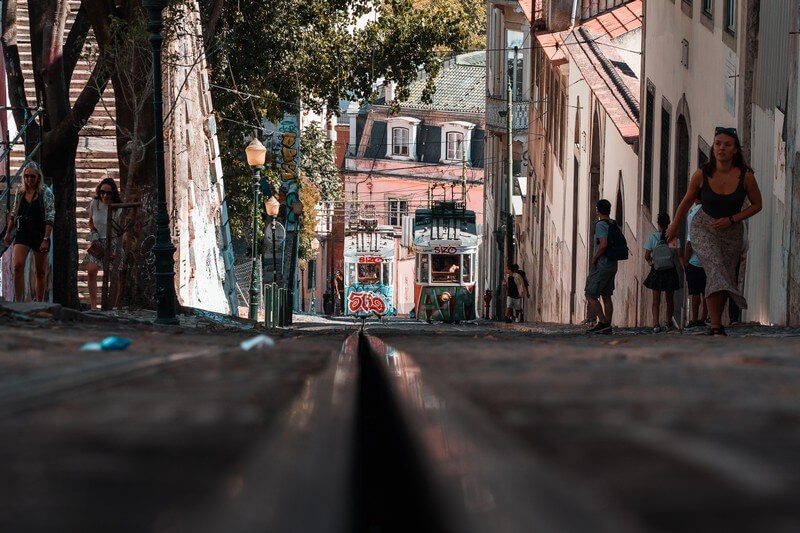
My favorite part is the Elevador da Bica. You don’t even have to take the funicular here. Just walking along the tracks will give you one or two good photo spots for Instagram.
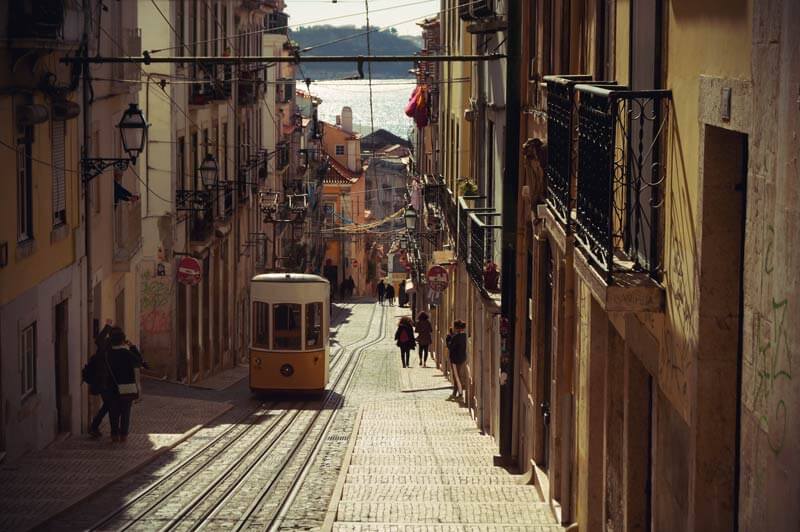
22. Aqueduto das Águas Livres – Explore the old aqueduct
The Águas Livres aqueduct dates from the 18th century and has been a Portuguese national monument since 1910. Until the 1960s, it played an important role in supplying water to the people of Lisbon.
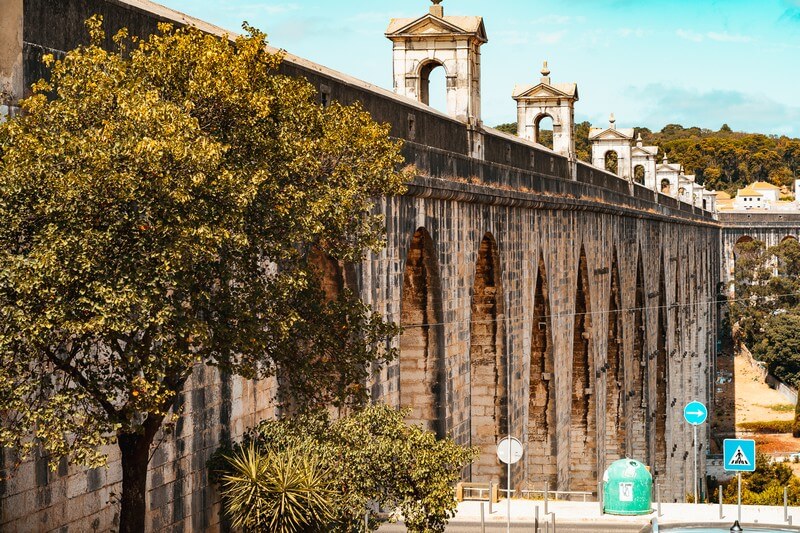
There is also a museum next to the aqueduct. Here you can learn a lot about the history of the aqueduct and also walk on it. But you take the most beautiful pictures from below. The whole construct is quite impressive.
23. LX Factory – Shop and eat in hipster stores on a creatively revitalized factory site
Where once weaving and textile companies, and later food processing and printing businesses, shaped this area with their hustle and bustle, a creative center has recently emerged in the form of the LX Factory.
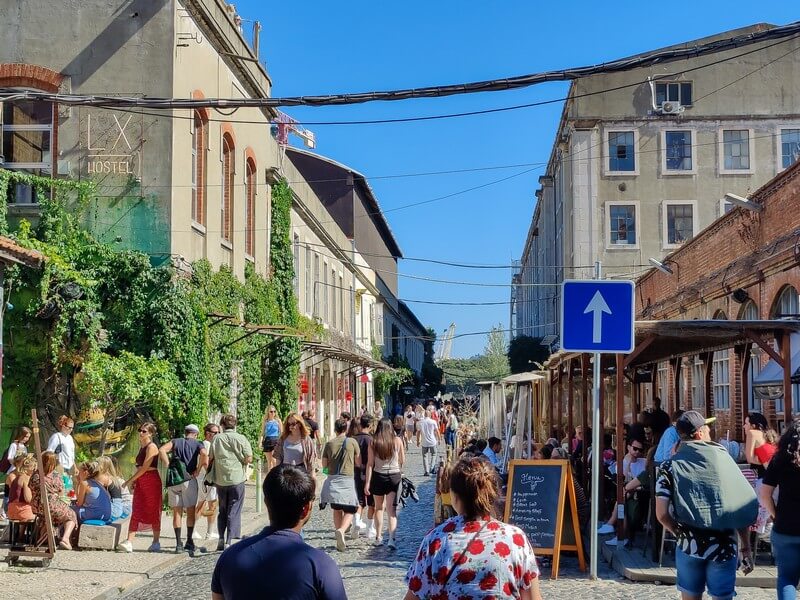
You stroll along the old factory buildings where various fashion, advertising, communication, multimedia, art, architecture and music stores have been set up. There are also many cool restaurants and craft beer or cocktail bars. I thought A Praca was the coolest.
You can also visit many events and exhibitions in the former factory premises.
Recommended Lisbon travel guide
There are many other attractions, such as the Aqueduto das Águas Livres, the Praça de Dom Pedro IV (Rossio) or the Campo Pequeno bullring, to name just a few. If you want to learn more about Lisbon, including a few more insider tips, then get the 101 Lisbon Travel Guide (also available as an ebook).
Paperback: 160 pages
Publisher: Lonely Planet; Edition: 2nd edition. (October 1, 2012)
Language: English
Best time to travel to Lisbon
Lisbon is of course at its most beautiful and warmest in summer, when it is also at its busiest. But it is one of those cities in Europe where you can actually travel all year round. Even in winter, when it is still snowing in the UK, it is a pleasant 8-15 degrees in Lisbon. Snow and frost are extremely rare. With 15 rainy days per month, you do run a certain risk, but the probability that you can soak up at least some sun is considerably higher than in Germany.
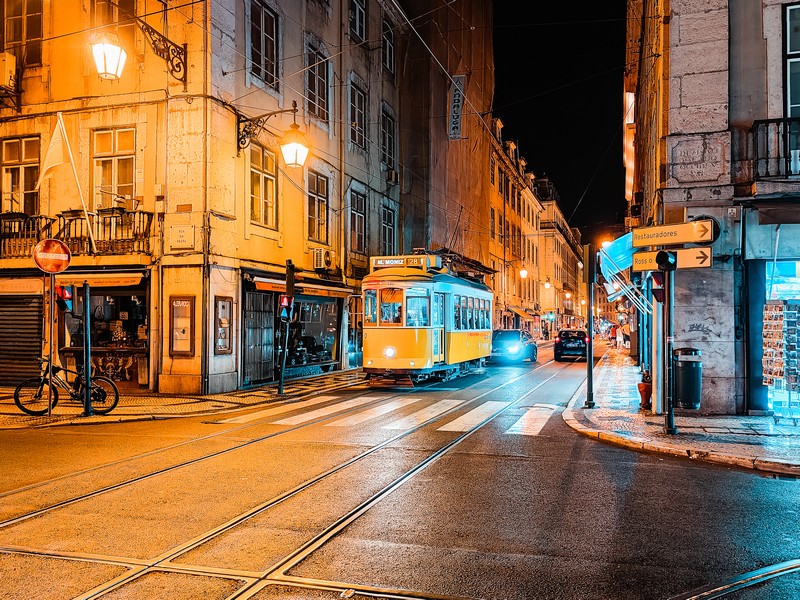
In my opinion, September is the best time for a city trip to Lisbon. It’s no longer as hot as in the summer, but still warm enough to go into the water, and the biggest tourist rush is already over.
The exciting history of Lisbon
With around 550,000 inhabitants, the capital of Portugal is actually quite a small European capital. By way of comparison, Düsseldorf has more inhabitants. Nevertheless, life is buzzing in Lisbon, which originated as a Phoenician settlement some 3,000 years ago. But it was also a Greek and Roman territory until the Moors finally occupied the city in the 7th century and held it for over 400 years before it was reconquered by the Christians in the mid-12th century. In 1256 Lisbon became the capital of the Portuguese Empire. Before that, it was Coimbra.
Lisbon experienced a boom in the 15th and 16th centuries after Vasco da Gama discovered the sea route to India (1497 to 1499). Lisbon was able to maintain its prosperity well into the 18th century by trading gold, spices and silk with Brazil until 1755, when the city was largely destroyed to its foundations by several severe earthquakes, a tsunami and a great fire. After that, reconstruction began in a fairly simple but earthquake-proof style, which now partly characterizes the cityscape.
More impressions of Lisbon
Here you can see a few more impressions of Lisbon.
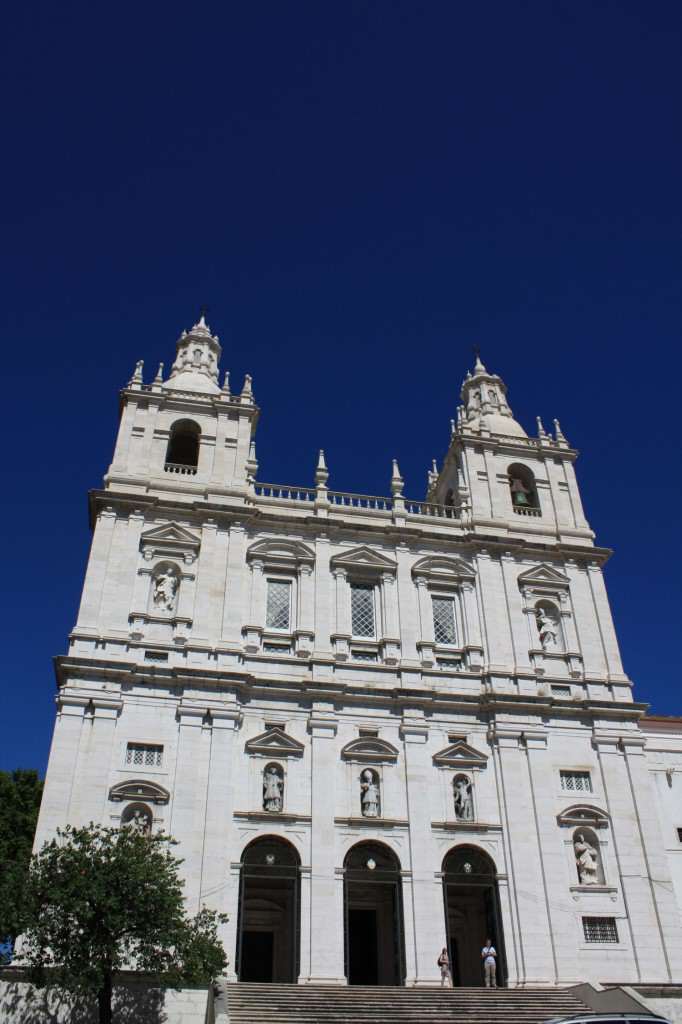
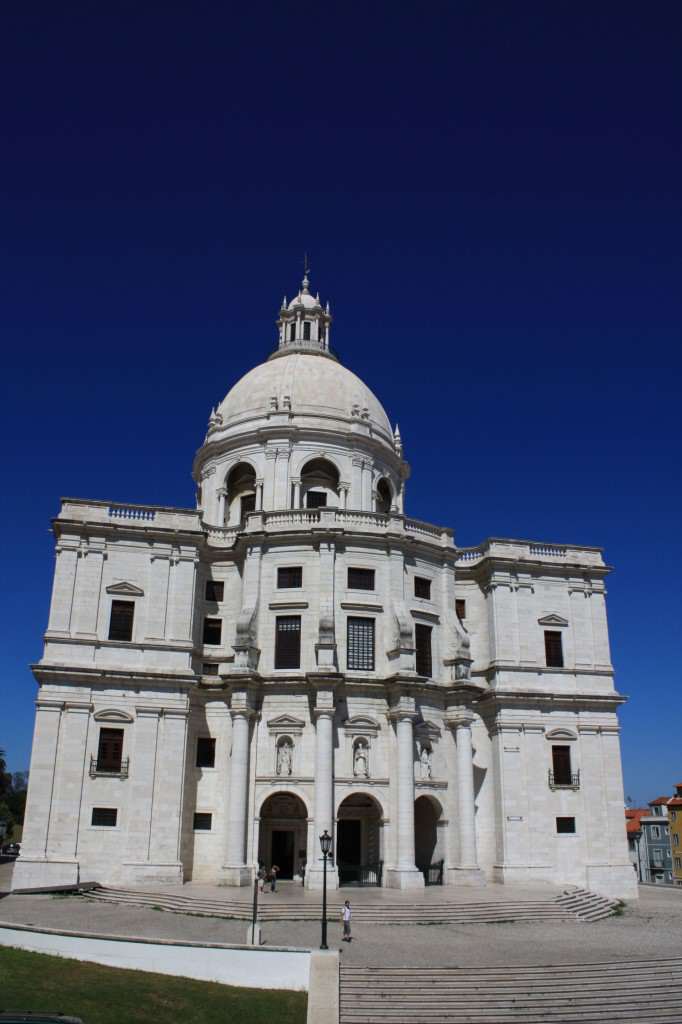
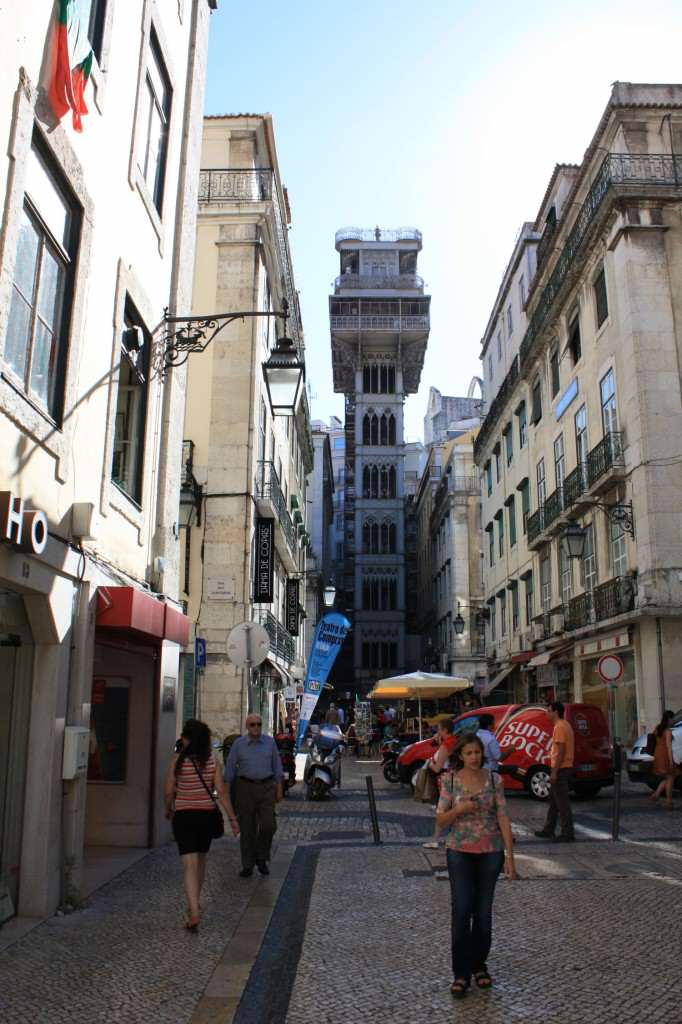
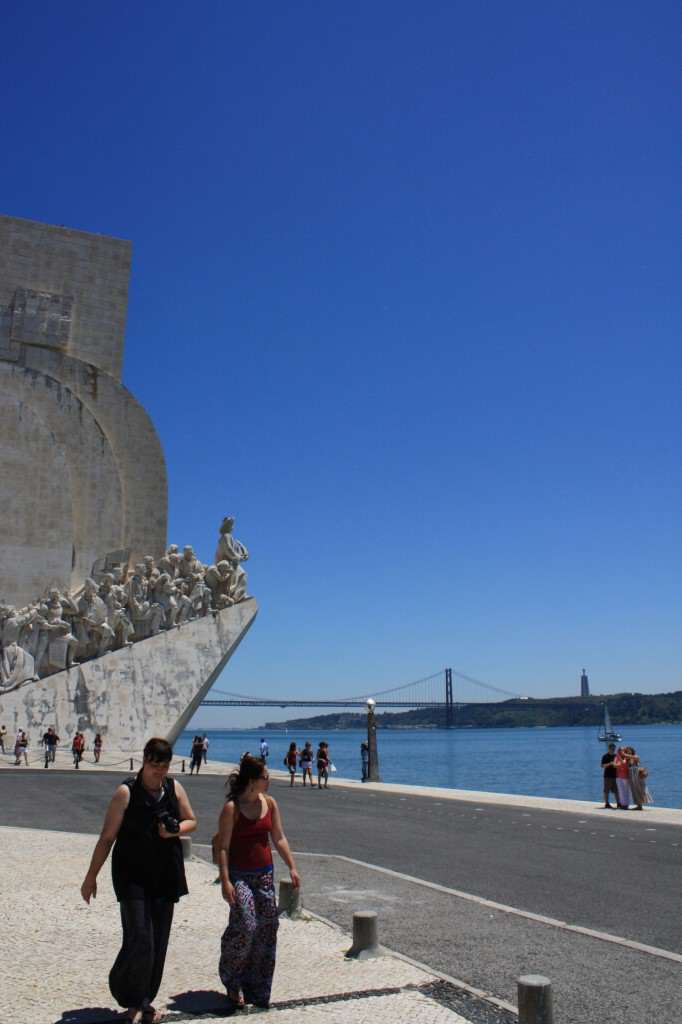


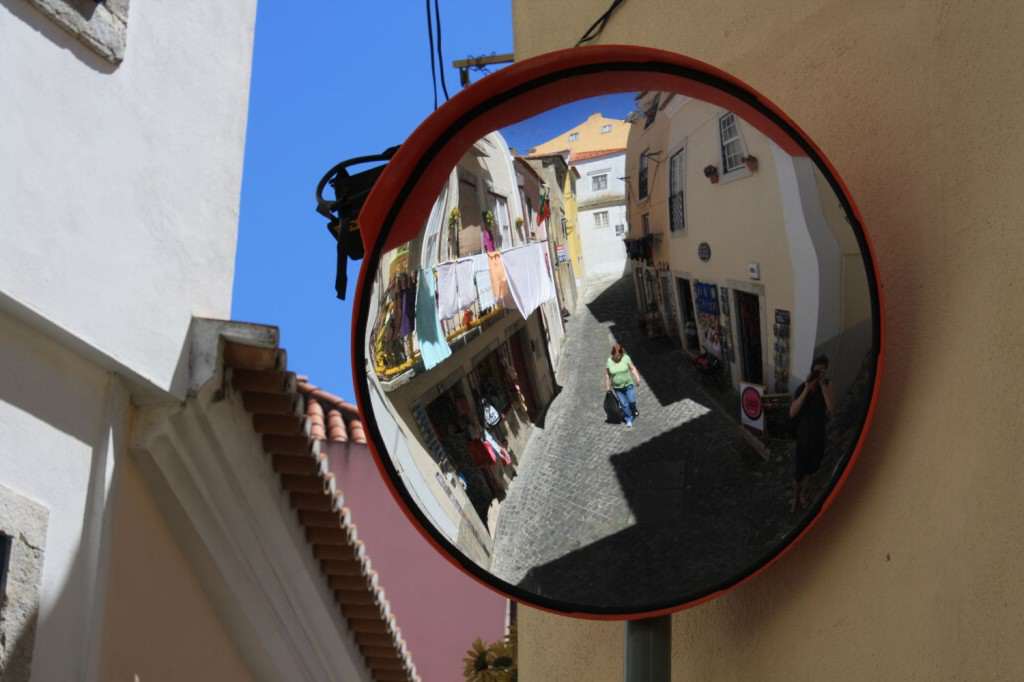







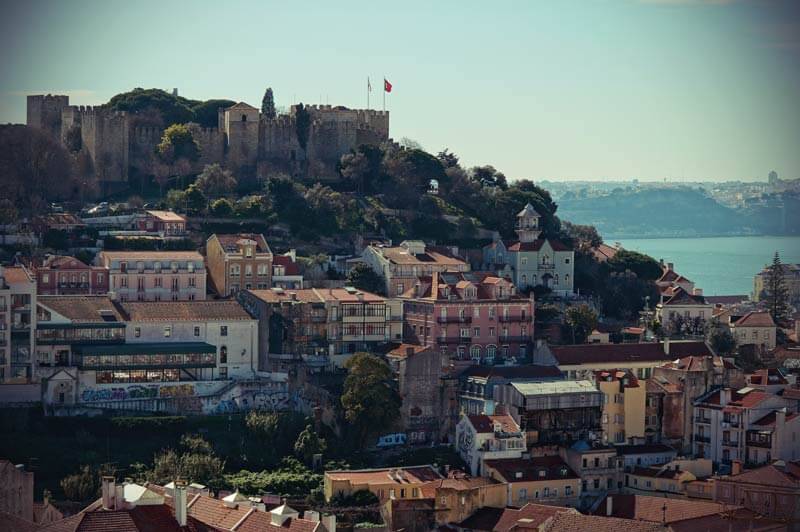
As you can see, there are some great Lisbon attractions. Which one is missing from this list? Write it in the comment
Tools & services I recommend for your trip:*
📶 Flexible and affordable mobile Internet worldwide
🚁 My drone for aerial photography
🚗 Find and compare cheap rental cars
🎟 Find and book cool activities
🔒 Secure Internet connection with NordVPN
*Note: These links are affiliate links. If you book through them, I will receive a small commission without it being more expensive for you. A purchase from you via these links helps me to continue offering free content without annoying ads on this website. Thank you for your support! I really appreciate it!

